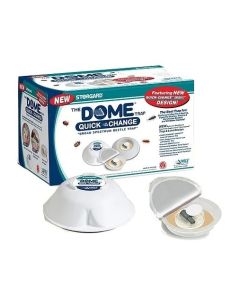Flour Beetles
Flour Beetle
Scientific Name: Tribolium species
How to identify a flour beetle
Tribolium confusum and T. castaneum are both small, reddish-brown beetles, 2.6 to 4.4mm in length. They are similar in size and appearance as well as in life cycles and habits. However, they can be distinguished with the aid of a hand lens. The antenna of T. confusum is gradually enlarged toward the tip, ending in "club" of 4 segments, whereas that of T. castaneum is abruptly club like, with the club consisting of 3 segments. T. confusum can fly whereas T. castaneum cannot. They are quite similar in appearance to Lyctus borers.

Where are flour beetles commonly found?
These two flour beetles are extremely common stored product pests and are commonly found in household pantries and commercial food manufacturers and distributors. They are pests of dried material of plant and animal origin but especially stored grains and grain products, peas, beans, shelled nuts, dried fruits, spices, chocolate, cayenne pepper and other materials.
Why are flour beetles considered a pest?
Stored product pests are responsible for enormous losses in may ways:
-
Losses due to direct consumption
-
Spoilage and loss of commodity quality
-
Contamination
-
Encouragement of mould growth in affected material
-
Economic losses
What is the biology and lifecycle of flour beetles?
Each female deposits 400 to 500 clear-white, adhesive eggs on or among food particles or food packaging. They hatch in 5 to 12 days into small, brownish-white larvae, which go through 5 to 12 instars and reach maturity in as few as 30 days under optimum conditions. The full-grown larvae are 4 to 5 mm long, slender, cylindrical, wiry in appearance and white, tinged yellowish. As the larvae mature, they come to the surface of the food medium to transform into naked white pupae. There are 4 or 5 generations annually.
Chemicals Required to Control Flour Beetles
A range of traps using pheromones and other attractants are available
-
These pheromone traps are designed as monitoring devices to determine whether a species is present, where the hotspots are and whether the numbers are high enough to justify an insecticide treatment
-
Traps are designed for monitoring in commercial environments
-
Traps can be effective as control measures in domestic situations (smaller areas)
Disrupters are a relatively new technology that can be used as part of an IPM program
-
The pheromone disrupts mating, breaking the breeding cycle
-
Disrupters can significantly reduce the need for spraying in commercial accounts
Management Tips for Flour Beetles
Residential treatments - Thorough inspection to find the source of the infestation
-
Check all food cupboards
-
Check open and unopened packets and containers
-
Dispose of any infested materials
-
If source cannot be identified check roof void / sub-floor
-
Carry out spot treatment to storage area surfaces if required
-
Use of pheromone traps to prevent future problems / monitor activity can be considered
Commercial treatments - Thorough inspection to find the source of the infestation
-
Infested stock will need to be disposed of or treated using grain protectants or fumigation options
-
Space sprays (often pyrethrum based) and surface sprays can be considered to target adults after (larvae) infestation has been controlled
-
Use of pheromone traps to prevent future problems / monitor activity can be considered




